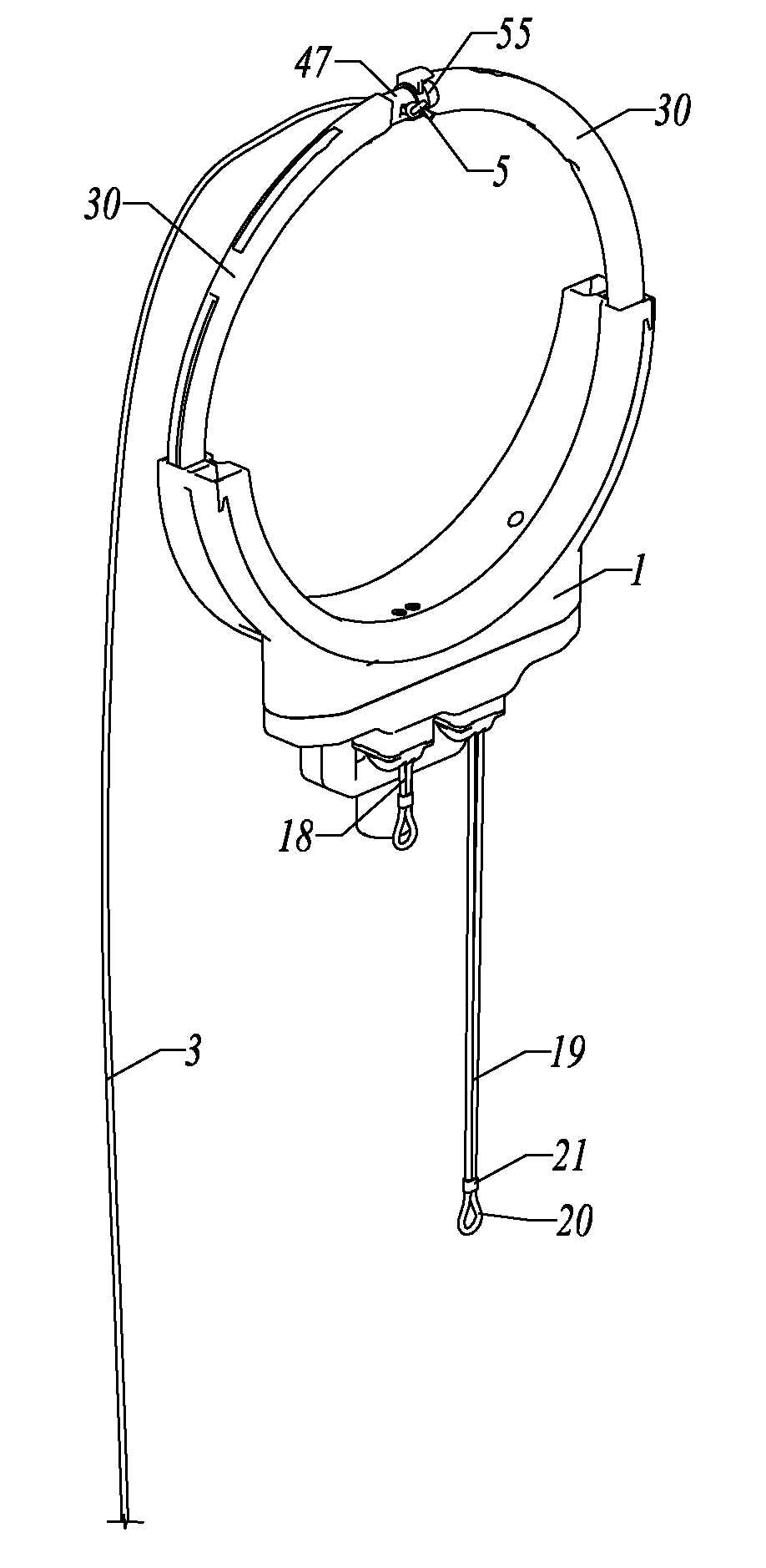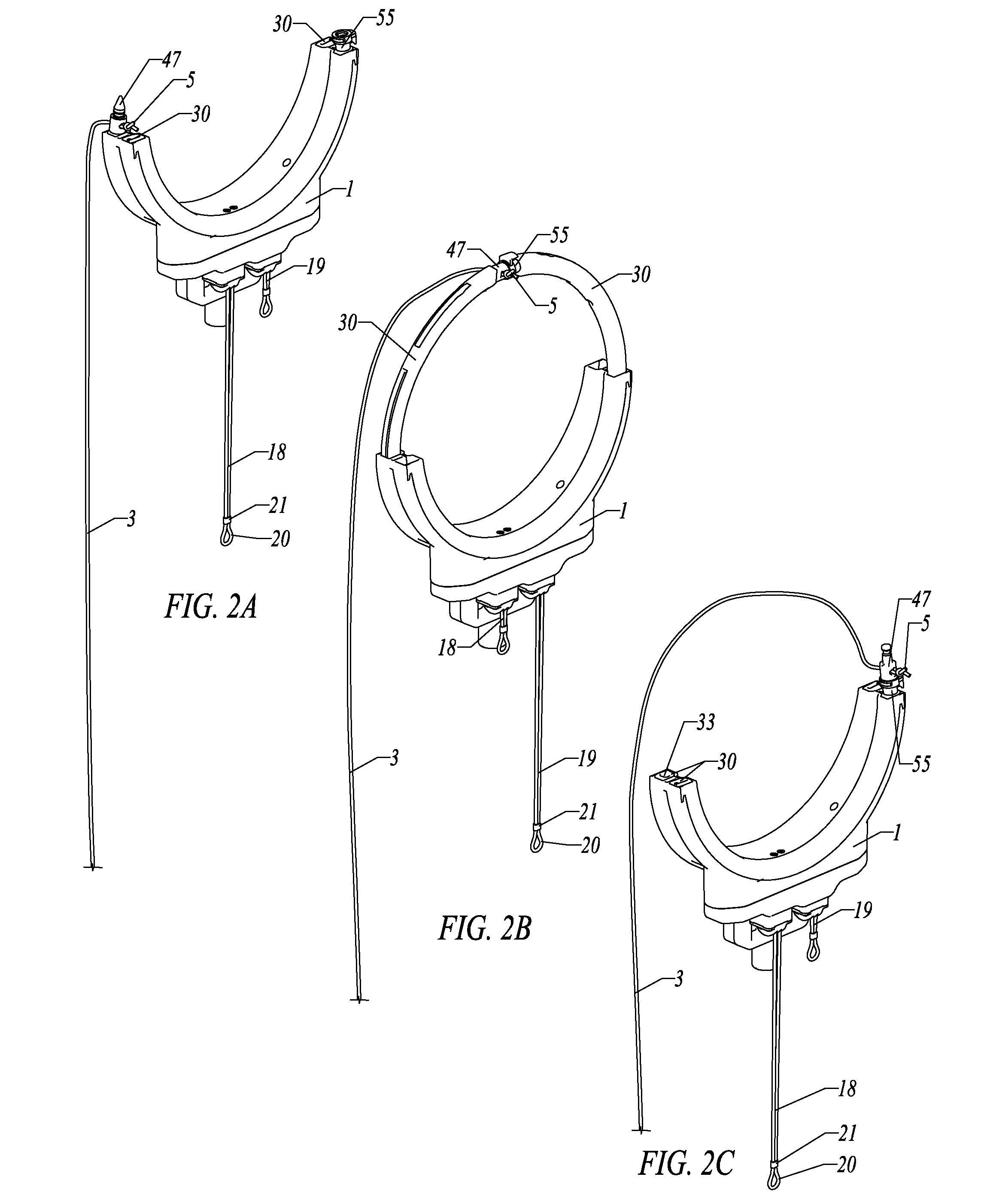Remotely-operated rope-threading tool
a remote-operated, rope-threading technology, applied in the direction of lifting devices, ropes and cables for vehicles/pulleys, sport apparatus, etc., can solve the problems of devices requiring devices, personal safety risks of people, and objects tied to ropes that present their own disadvantages and hazards, so as to achieve convenient attachment
- Summary
- Abstract
- Description
- Claims
- Application Information
AI Technical Summary
Benefits of technology
Problems solved by technology
Method used
Image
Examples
Embodiment Construction
Referring now to the drawings, and in particular, to FIG. 1A, a remotely-operated rope-threading tool 1 is positioned against the underside of an object to be encircled by a rope 3, in this case, a tree limb 6. Because of its light weight, its size and configuration, the rope-threading tool is easily positioned by a person 4 with the aid of a standard extension pole 2. In this illustration, the goal is to thread a supporting rope 3 for a tarp 7 over the tree limb 6 in order to secure the rope 3 with the tarp 7 elevated in the air.
Referring now to FIG. 1B, the example shown is of a person 4 using the threading tool 1 on the extension pole 2 to thread a supporting rope 8 for a banner 9 over a lower member 10 of a roof truss 11 in a building. (The extension pole 2 is shown more clearly in FIG. 12 and FIG. 21.)
Referring now to FIG. 1C, the example shown is of a person 4 using the threading tool 1 on the extension pole 2 to thread a fall-protection rope 12 through a safety ring 13 which ...
PUM
 Login to View More
Login to View More Abstract
Description
Claims
Application Information
 Login to View More
Login to View More - R&D
- Intellectual Property
- Life Sciences
- Materials
- Tech Scout
- Unparalleled Data Quality
- Higher Quality Content
- 60% Fewer Hallucinations
Browse by: Latest US Patents, China's latest patents, Technical Efficacy Thesaurus, Application Domain, Technology Topic, Popular Technical Reports.
© 2025 PatSnap. All rights reserved.Legal|Privacy policy|Modern Slavery Act Transparency Statement|Sitemap|About US| Contact US: help@patsnap.com



